Mice come in many different types and they can take on a variety of roles in regard to their relationship with humans.
People keep them as pets, they are some of the most important animals when it comes to scientific research, but most commonly they make themselves unwanted pests that live in and around our homes.
To remove mice from a home and prevent them from entering again, it requires an understanding of these creatures’ habits and weaknesses.
Find out what you need to know about these rodents in the following guide.
All About Mice
Mice come in a variety of different species and they all have their own unique characteristics and behaviors. However, for this guide, we are mostly going to be focused on the house mouse; those little brown critters that you may find living in your home or scurrying about in the yard.
Unless a mouse is eating or sleeping, it is very likely to be running. They try to get from place to place quickly to avoid predators or any other danger that may exist. Though running is their most common form of movement, they can also climb, swim and jump if the need should arise.
Just like humans, mice are omnivorous and they will eat from a variety of different food sources. If they are in a home or storeroom, they are very likely to get into food that is being kept or trash bins that have discarded edible material in them. In addition to being found around homes, the house mouse will also be found around agricultural land.
When they inhabit a location, the first order of business is to locate a concealed place to build their nest. Generally, in a nesting area there will be one dominant male with a few females and their young.
Mice in the New Orleans Area
If humans settle somewhere, it is almost certain that mice are going to try to take advantage of the situation. The structures that we build provide good opportunities for nesting and our presence usually means that there will be some form of food source available to them.
While rats and mice are common to just about every city, the unfortunate fact is that New Orleans has a particularly bad problem with rodents.
Surveys have shown that residents of New Orleans report a much higher rate of pest spottings than other cities and this includes animals such as the house mouse and the rat. There are many reasons for larger numbers, but our temperate climate and relatively high numbers of abandoned properties play a big part.
Signs of a Mouse Infestation
A human dwelling is an especially inviting place for rodents, and mice are very resourceful when it comes to finding ways into your house. In fact, it could be said that if a homeowner doesn’t currently have rodent squatters, without proper precautions he will soon!
Therefore, it is important for homeowners to know how to identify an infestation.
Seeing the mice is probably the easiest way to identify an infestation, but they do have a tendency to stay out of sight, so you need to look for other signs.
Firstly, an area where mice are nesting will have a distinct musky odor to it. Unfortunately, some people know this as simply ‘the way the attic smells.’
Additionally, you can look for signs like droppings, gnaw marks, and tracks under furniture and along walls. While you’re in the attic or shed retrieving lights, you should look around a bit to find any nests.
Prevention and Controlling Mice
For rodent control, there are a few approaches that you could take.
Using things like poisons and glue traps are not recommended, not only because it is incredibly easy to nab a creature you weren’t targeting, and it’s also a pretty cruel way to go, but most importantly it does nothing to prevent reoccurrence.
The most important factor is prevention!
Eliminate all food sources by keeping a clean kitchen and carefully storing food in a way that is difficult for rodents to access.
Use a trash can with a secure lid to prevent feasting on leftovers. Perhaps most importantly, you should work to identify the places where they gain entry and find a way to close it off.
Humane Removal Concerns
If mice are in your home, then finding a humane way to remove them is the best way to go. Even traps that are designed to kill instantly often end up merely injuring the animal and as a result, they die a slow and painful death.
If you do remove all the mice successfully, exclusion is the key to keeping this from happening again. If you do not limit their access and eliminate the food sources, they will just keep coming back.
For expert help with trapping, removal and exclusion, contact our professionals at Dugas Pest Control. We have the necessary experience to humanely trap and release mice, and our team knows all of the ins and outs of exclusion and prevention.
Don’t let mice overwhelm you, let us help you end this nuisance once & for all!

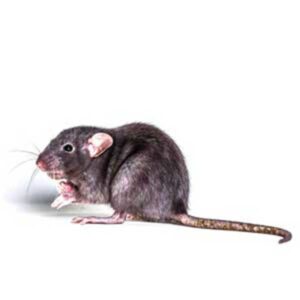 There exists a social stigma about rodents, which is why you may not hear much about this subject at the block party. However, muster up the courage to ask around and you’re sure to hear more than you want to know from a surprising number of your neighbors!
There exists a social stigma about rodents, which is why you may not hear much about this subject at the block party. However, muster up the courage to ask around and you’re sure to hear more than you want to know from a surprising number of your neighbors! Fogging is a proven method for getting rid of insects, but not necessarily a straightforward one. A small amount of pesticide is included in a smoke or fog mixture that can adhere to an insect’s wings and poison them, but the amount of insecticide used is so low or incorrectly applied that often times, an insect will only be stunned. Also, if you over fog a large area, it could make breathing difficult for people.
Fogging is a proven method for getting rid of insects, but not necessarily a straightforward one. A small amount of pesticide is included in a smoke or fog mixture that can adhere to an insect’s wings and poison them, but the amount of insecticide used is so low or incorrectly applied that often times, an insect will only be stunned. Also, if you over fog a large area, it could make breathing difficult for people.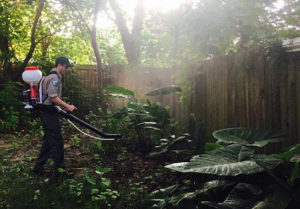 Spraying insecticide can have its advantages, in that you are delivering a more concentrated dose of poison to your pests. The chemicals have a stronger chance of killing the insects in the area, but there are drawbacks to using a straight spray.
Spraying insecticide can have its advantages, in that you are delivering a more concentrated dose of poison to your pests. The chemicals have a stronger chance of killing the insects in the area, but there are drawbacks to using a straight spray.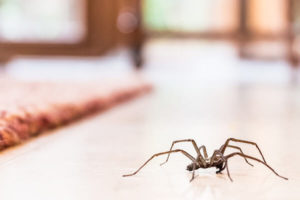 Although not exactly the poster children of the bug world, spiders are a valuable part of our ecosystem. They help to manage the pest population and a few well-placed webs can help keep a home free of flying bugs.
Although not exactly the poster children of the bug world, spiders are a valuable part of our ecosystem. They help to manage the pest population and a few well-placed webs can help keep a home free of flying bugs.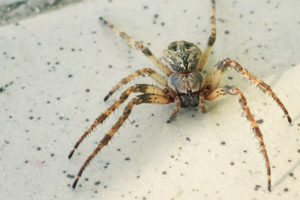 There are thousands of types of spiders around the world. These eight-legged creatures are both fascinating and frightening, and even in the cleanest home, you’re never far from one. Louisiana is home to a very wide range of arachnids, ranging from the impressive but not dangerous to the tiny but deadly. Understanding the different spiders you might encounter at home or out in the yard can help you determine whether you should call Dugas Pest Control for help, or if you’ve got a friendly helping hand in eliminating some other potential threats.
There are thousands of types of spiders around the world. These eight-legged creatures are both fascinating and frightening, and even in the cleanest home, you’re never far from one. Louisiana is home to a very wide range of arachnids, ranging from the impressive but not dangerous to the tiny but deadly. Understanding the different spiders you might encounter at home or out in the yard can help you determine whether you should call Dugas Pest Control for help, or if you’ve got a friendly helping hand in eliminating some other potential threats. Some people are of the mindset that an ant is just an ant…but this is far from true if you are trying to get rid of unwanted ants from your home or yard.
Some people are of the mindset that an ant is just an ant…but this is far from true if you are trying to get rid of unwanted ants from your home or yard.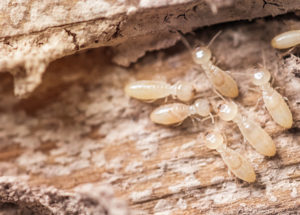 To the average homeowner, termites might seem like they are all the same. They’re small, stubborn pests that chew through wood and cause internal damage to structures. Yet for pest control companies, termites are not all the same, and knowing which ones we’re dealing with is helpful in controlling and eradicating the infestation. The two types of termites that are commonly confused with each other are the formosan termites and the subterranean termites.
To the average homeowner, termites might seem like they are all the same. They’re small, stubborn pests that chew through wood and cause internal damage to structures. Yet for pest control companies, termites are not all the same, and knowing which ones we’re dealing with is helpful in controlling and eradicating the infestation. The two types of termites that are commonly confused with each other are the formosan termites and the subterranean termites.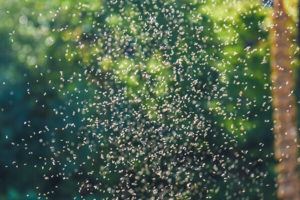 With all the rain we’ve had this winter here in Baton Rouge, you may have noticed how many bugs are out on the ground after a big rainstorm. Go look outside after the next big rain, and you will likely see ants, worms, and many other bugs crawling around in your grass or on paved surfaces near your house.
With all the rain we’ve had this winter here in Baton Rouge, you may have noticed how many bugs are out on the ground after a big rainstorm. Go look outside after the next big rain, and you will likely see ants, worms, and many other bugs crawling around in your grass or on paved surfaces near your house.